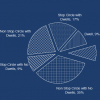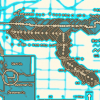Publication
The widespread adoption of automated vehicle location systems (AVL) and automatic passenger counters (APC) in the transit industry has opened new venues in operations and system mo...
Publication
Measuring the performance of a transit system is the first step toward efficient and
proactive management. In recent years, the use of performance measures for transportation plan...
Publication
Transit travel time and operating speed influence service attractiveness, operating cost, and system efficiency. The objective of this paper is to estimate the values of parameters...
Publication
This research addressed changes in passenger activity and operating performance after implementation of a bus stop consolidation project at TriMet, the regional transit provider fo...
Publication
This study compares the changes in levels of accessibility over time in the
Minneapolis - St. Paul region using two different modes (car and public transport). The
importance of ...
Publication
This study examines the effects of overlapping walking service areas of bus stops on the demand for bus transit. This requires controlling for variation in potential transit demand...
Publication
Ridership is a key goal in the transit industry. Conventional transit analysis focuses
on two types of users—captive and choice riders—but rarely aims to understand the
prefe...


